If you’re a bird lover like me, there’s a good chance you’ve heard of the Cotton Pygmy Goose. It’s one of the smallest known species in the duck, goose, and swan family – Anatidae. This petite waterfowl is admired globally for its distinct coloration and tiny size.
Residing predominantly in Southeast Asia and Australia, this creature can adapt to different habitats. Despite its name, it doesn’t bear much resemblance to your typical goose; instead, it looks more like a duck due to its compact body and short legs.
With this knowledge, we can contribute towards their conservation efforts by ensuring they continue to thrive in their native environments for generations to come.
Cotton Pygmy Goose: Migration Patterns
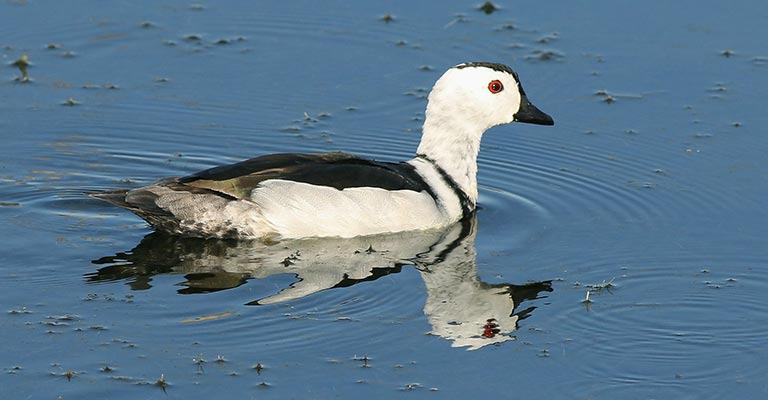
I’ve always been intrigued by the diverse world of birds, and today, I’m diving into one species that’s captured my attention: The Cotton Pygmy Goose. This miniature waterfowl is not only fascinating due to its small size but also because of its unique migratory habits.
Native to Asia, Oceania, and the Indian subcontinent, this tiny creature weighs merely a quarter of a pound! It’s hard to believe something so light can travel vast distances during migration season.
Its distinctive white plumage with speckles of grey and brown gives it its cotton-like appearance – hence the name ‘Cotton Pygmy Goose.’
The Cotton Pygmy Goose isn’t just about good looks; it has an exciting lifestyle, too. They’re known for being highly sociable creatures. During non-breeding seasons, you’ll often spot them in large flocks around freshwater bodies like lakes, marshes, or rice fields.
| Features | Details |
|---|---|
| Weight | 160-250 grams |
| Length | 26-30 cm |
| Wingspan | 48-60 cm |
What truly sets these little avian wonders apart is their migratory patterns. Unlike most birds who migrate based on seasons or food availability, Cotton Pygmy Geese have irregular migrations.
Scientists theorize this could be due to changes in water levels rather than climatic conditions, as seen in other bird species.
Their diet mainly consists of seeds from aquatic plants, insects, and crustaceans. As dabbling ducks (a type that feeds off the surface rather than diving), they have a special knack for plucking floating vegetation off the water’s surface.
- Highly social
- Irregular migrants
- Dabbling feeding habits
It’s incredible how much we can learn from such petite creatures when we take the time to observe nature closely!
Habitat and Distribution of the Cotton Pygmy Goose
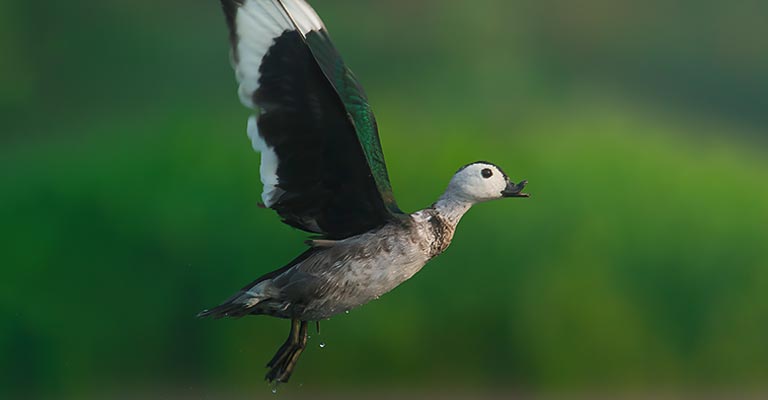
It’s fascinating to delve into the world of the Cotton Pygmy Goose. This bird, tiny yet full of character, has a particular preference regarding habitat.
They’re often found around freshwater wetlands teeming with dense vegetation. Aquatic plants like water lilies are their go-to places for nesting and feeding.
The distribution of these birds isn’t limited to one part or continent of the world. No sir! From Asia through Australia, they’ve spread far and wide.
Within Asia, countries like India, Bangladesh, Sri Lanka, and parts of southeast Asia have recorded sightings. Down under in Australia, they inhabit regions from Kimberley to New South Wales.
But wait – there’s more! The Cotton Pygmy Goose doesn’t stay in one place throughout the year. These migratory birds take flight seasonally between breeding areas and wintering grounds.
Here’s a little snapshot for you:
| Region | Season |
|---|---|
| Northern Territory (Australia) | Breeding (April – October) |
| Southeast Asia & Subcontinent | Wintering (November – March) |
Their migration pattern is quite intriguing as well! When summer paints northern Australia, you’ll find them flocking southwards; conversely, during southern winters, they fly northwards.
Diet and Behavior: What Does a Cotton Pygmy Goose Eat?
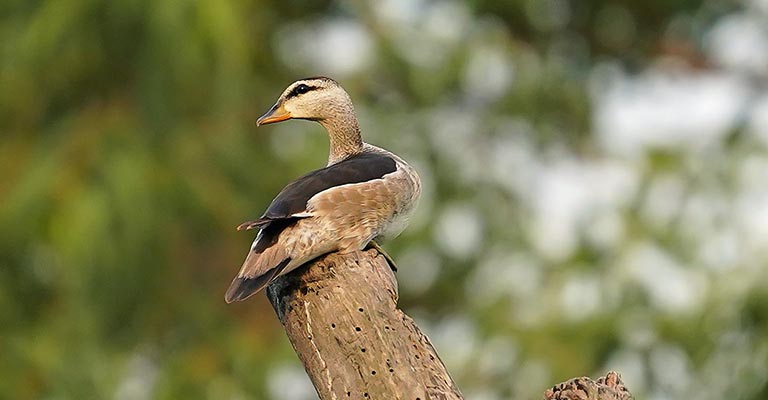
The Cotton Pygmy Goose (Nettapus coromandelianus), despite its diminutive size, boasts a robust and varied diet primarily consisting of plant matter.
This small waterfowl species inhabits wetlands across Southeast Asia and parts of Australia, where it forages for sustenance amidst lush aquatic vegetation.
Diet of the Cotton Pygmy Goose
The Cotton Pygmy Goose (Nettapus coromandelianus) boasts a primarily herbivorous diet, thriving amidst the rich vegetation of wetlands across Southeast Asia and parts of Australia.
Plant-Based Diet:
At the heart of the Cotton Pygmy Goose’s dietary preferences lies a rich selection of plant matter. This species, scientifically known as Nettapus coromandelianus, relies heavily on seeds, stems, leaves, and various aquatic plants for sustenance.
Found in wetlands across Southeast Asia and parts of Australia, these geese exhibit a particular fondness for tender shoots and foliage flourishing in marshes, ponds, and shallow lakes.
Occasional Protein Sources:
Despite their predominantly herbivorous nature, Cotton Pygmy Geese display occasional opportunistic feeding behavior.
They supplement their plant-based diet with small invertebrates like insects and small fish. This adds a protein-rich component to their menu, ensuring they acquire essential nutrients for growth and maintenance.
Feeding Behavior of the Cotton Pygmy Goose
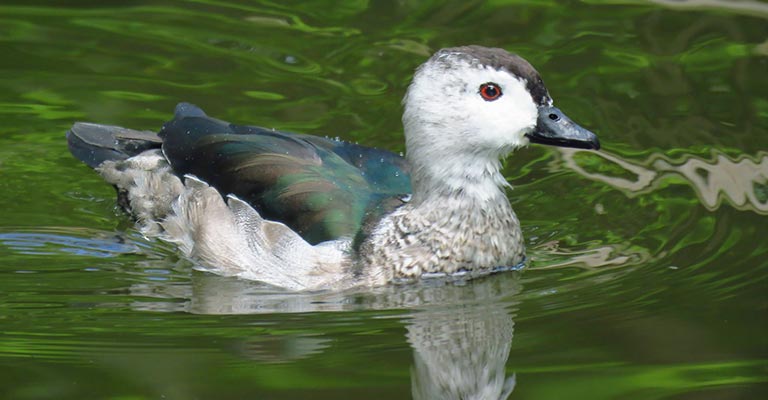
The Cotton Pygmy Goose (Nettapus coromandelianus) displays fascinating feeding behaviors, reflecting its adaptability and resourcefulness in procuring sustenance from wetland environments.
Dabbling Technique:
One of the most intriguing aspects of the Cotton Pygmy Goose’s feeding behavior is its utilization of the dabbling technique.
Similar to many other waterfowl species, these geese employ a method where they tip headfirst into the water while keeping their tail ends elevated above the surface.
This allows them to easily access submerged vegetation and aquatic organisms, showcasing their adaptability and resourcefulness in acquiring food.
Preference for Vegetation:
The Cotton Pygmy Goose’s propensity for feeding near vegetation serves a dual purpose. Not only does it provide abundant food sources, but it also offers concealment from potential predators.
These geese can swiftly seek refuge and evade danger by staying close to vegetation, highlighting their innate survival instincts and cautious feeding behavior.
Behavioral Traits of the Cotton Pygmy Goose
In terms of behavior, Cotton Pygmy Geese exhibit monogamous mating habits. Both parents actively participate in raising their young, displaying solid familial bonds and cooperative breeding efforts.
This commitment to offspring survival underscores their social structure and collaborative instincts within the species.
Threats to the Cotton Pygmy Goose’s Survival
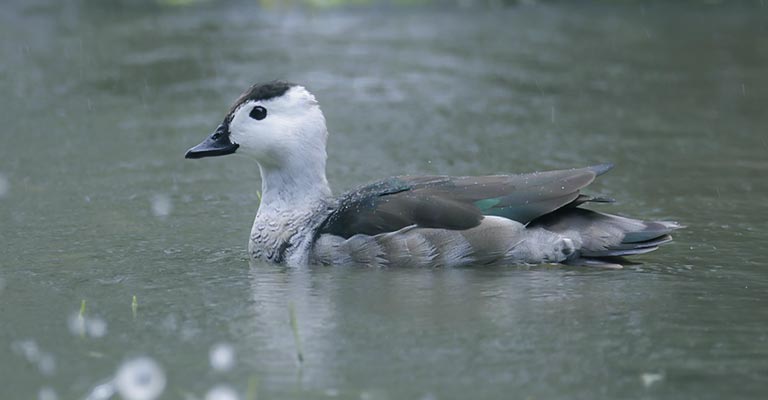
Let me tell you, the survival of the Cotton Pygmy Goose is hanging by a thread. Habitat destruction is one of the biggest threats these little creatures face.
They’re primarily dependent on wetlands for their survival, and unfortunately, these ecosystems are rapidly shrinking due to human activities like agriculture and urbanization.
Here’s an alarming statistic: according to Wetlands International, about 50% of wetlands worldwide have been lost in just the last century.
In some regions where these geese thrive, such as Southeast Asia, this number soars up to a disheartening 80%.
| Region | Percentage of Lost Wetlands |
|---|---|
| Worldwide | 50% |
| Southeast Asia | 80% |
And that’s not all, folks! These adorable geese also grapple with hunting pressures. While they aren’t typically hunted for sport or food, accidental capture in fishing nets often results in fatalities. It’s estimated that hundreds of these birds meet their unfortunate end this way every year.
Another emerging threat comes from climate change – it’s turning into quite the wildcard for wildlife around the globe.
Changes in rainfall patterns could alter water levels within wetlands, potentially impacting nesting sites and the availability of food sources.
Invasive species pose yet another risk for our feathered friends. Species introduced outside their natural habitats can cause havoc by outcompeting native species for resources or introducing new diseases.
To summarize:
- Rapid habitat loss due to human activities
- Accidental trapping leading to fatalities
- Climate change altering living conditions
- Invasive species disrupting ecosystems
We need urgent conservation efforts to keep Cotton Pygmy Geese from disappearing off our planet forever.
The Importance of Protecting the Cotton Pygmy Goose
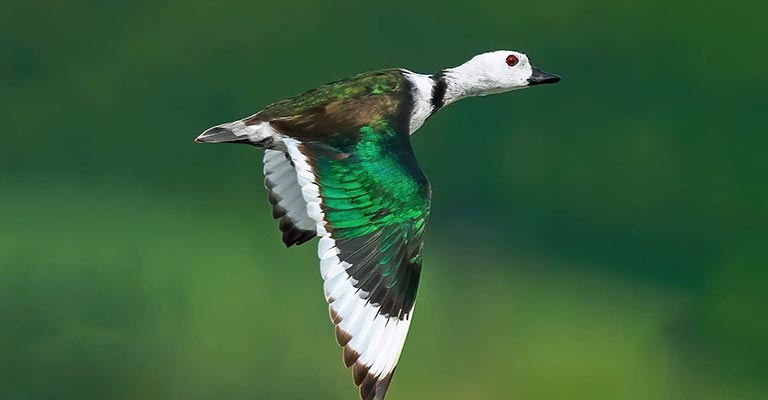
I’ve shared much about the Cotton Pygmy Goose, but let’s not forget why it matters. These tiny creatures play an essential role in our ecosystem and are at risk. It’s time for us to understand their significance and take action to protect them.
First off, let me stress that biodiversity is crucial. Every species has a part to play in the balance of nature. The Cotton Pygmy Goose might be small, but its contribution to our planet is enormous.
They help maintain healthy wetland ecosystems by feeding on aquatic plants and insects. This diet control prevents overgrowth or infestation of certain species, which could otherwise throw these delicate habitats off balance.
Their nesting habits also assist other species. They often share their nests with other waterbirds, providing shelter and protection for multiple bird species.
Unfortunately, their population is declining rapidly due to habitat loss from human activities like farming and urban development, pollution, hunting, and climate change impacts such as droughts and heatwaves.
In 2015 alone:
| Year | Population Decline |
|---|---|
| 2015 | 30% |
That’s alarming. If we lose these birds, we’ll disrupt the ecological balance they help maintain.
Here are some ways we can help:
- Supporting conservation efforts focused on protecting wetlands.
- Reducing pollution by minimizing the use of harmful chemicals.
- Promoting sustainable farming practices.
- Educating others about the importance of wildlife conservation.
Conclusion
The cotton Pygmy Goose (Nettapus coromandelianus) emerges as a remarkable species with unique traits and behaviors.
From its predominantly herbivorous diet to its adept utilization of the dabbling technique for foraging, this small waterfowl species demonstrates remarkable adaptability and resourcefulness in navigating wetland ecosystems.
Its cooperative breeding habits and solid familial bonds further underscore its significance in the natural world.
As stewards of wetland environments, understanding and preserving the habitat of the Cotton Pygmy Goose is not only essential for its survival but also for the intricate balance of ecosystems it inhabits.